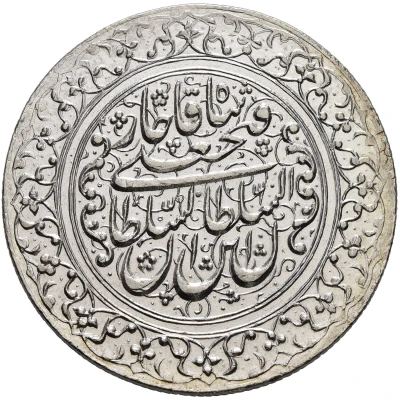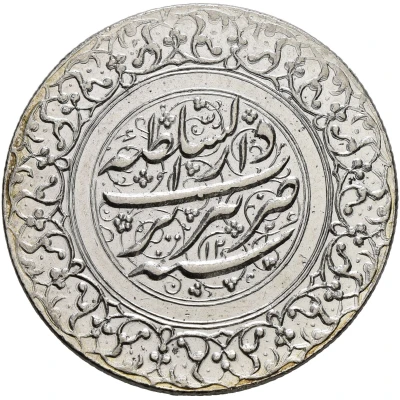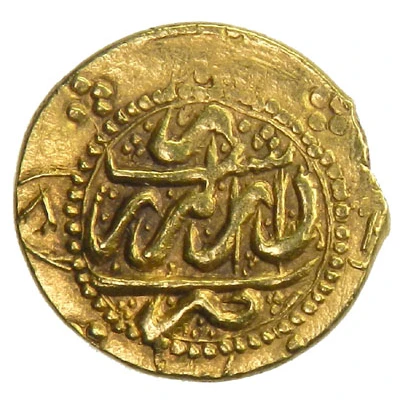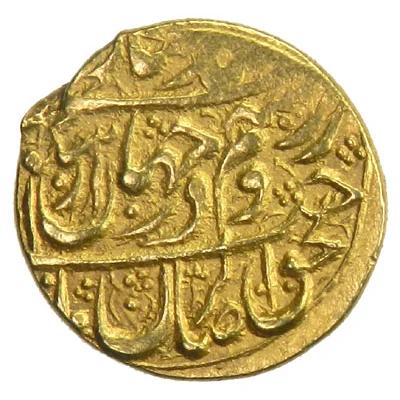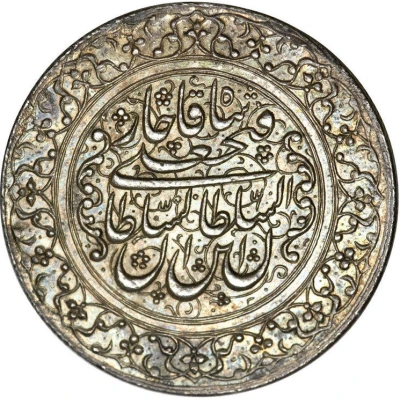
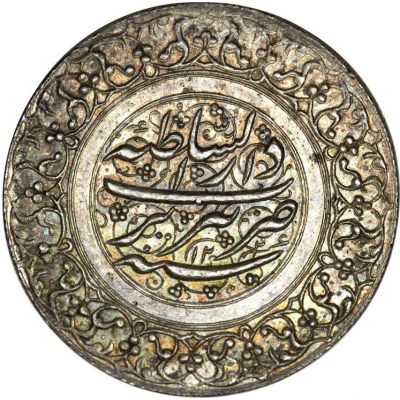

© سامعی (CC BY)
2 Rial - Fat'h Ali Qajar
1229 (1814) year| Silver | 20.87 g | 38 mm |
| Issuer | Iran |
|---|---|
| Shah | Fath-Ali Shah (1797-1834) |
| Type | Standard circulation coin |
| Year | 1229 (1814) |
| Calendar | Islamic (Hijri) |
| Value | 2 Rial |
| Currency | First Rial (1798-1825) |
| Composition | Silver |
| Weight | 20.87 g |
| Diameter | 38 mm |
| Shape | Round |
| Orientation | Medal alignment ↑↑ |
| Demonetized | Yes |
| Updated | 2024-10-05 |
| Numista | N#139410 |
|---|---|
| Rarity index | 95% |
Reverse
Lettering:
ضرب دارالسّلطنه تبریز
سنه ۱۲۲۶
Edge
Plain
Interesting fact
One interesting fact about the 2 Rial - Fat'h Ali Qajar 1229 (1814) coin from Iran is that it features a unique blend of Islamic and European influences in its design. The coin's obverse side features a depiction of Fat'h Ali Shah Qajar, the second Qajar king of Iran, dressed in traditional Persian attire and wearing a crown. The reverse side of the coin, on the other hand, features a stylized representation of a lion and a sun, which were symbols commonly associated with European heraldry. This blending of cultural influences reflects the complex history and cultural exchange that occurred during the Qajar dynasty, which ruled Iran from 1789 to 1925.
